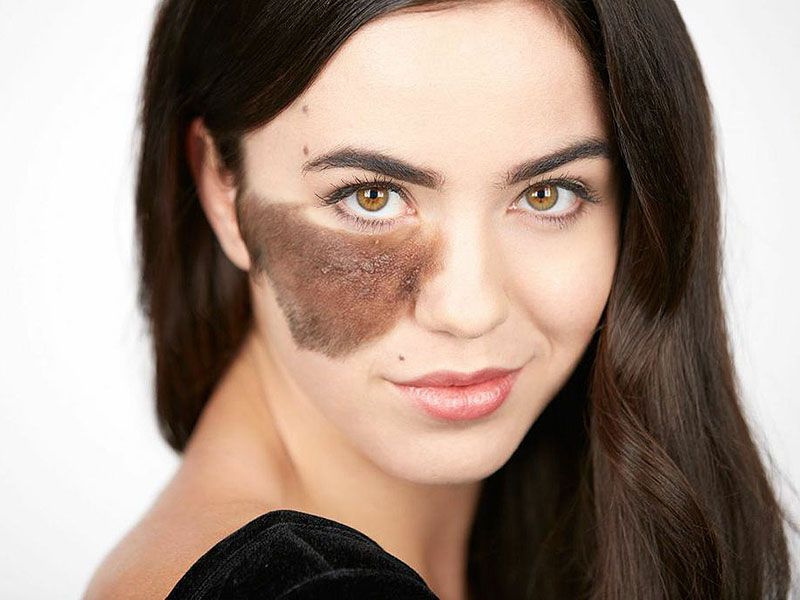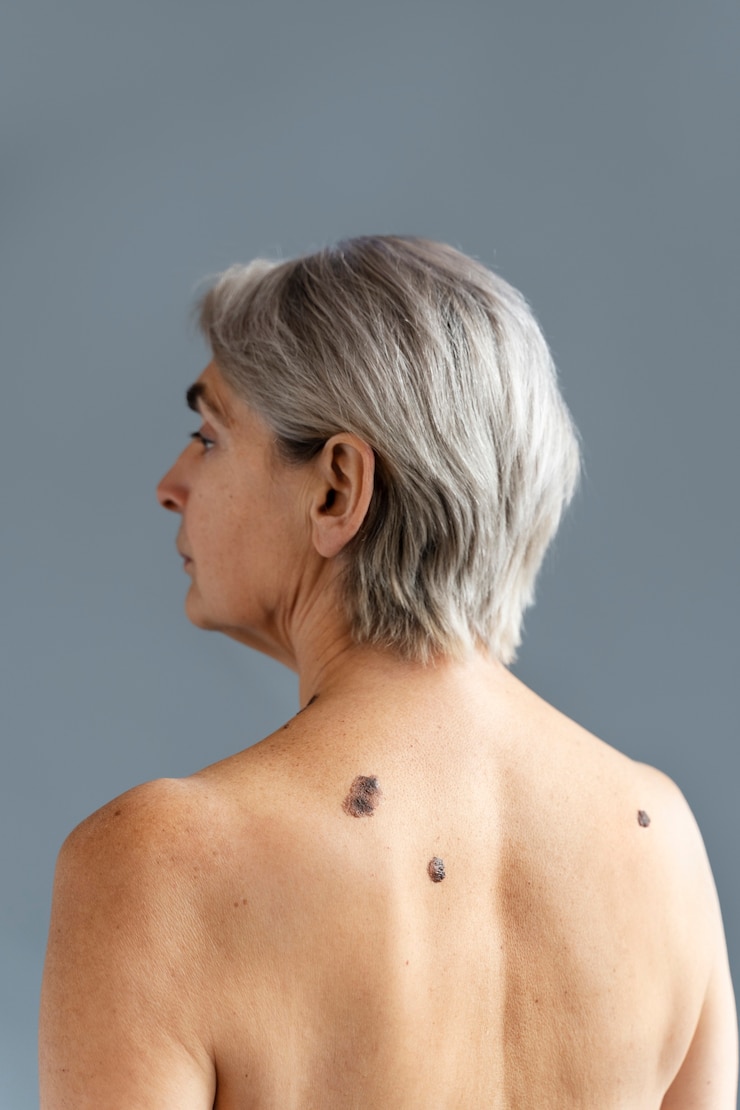Birthmarks are skin discolorations that may vary in size, shape, and color. While many birthmarks are harmless and may fade over time, some persist or even grow larger, leading individuals to seek medical or cosmetic treatment. Laser therapy is one of the most popular and effective methods for Birthmarks Removal Treatment in Dubai. This guide provides a comprehensive overview of laser birthmark removal, including how it works, the different types of lasers used, the treatment process, and what to expect during recovery.
How Does Laser Birthmark Removal Work?
Laser birthmark removal is a non-invasive procedure that uses highly focused light beams to target and break down the abnormal blood vessels or pigmented cells responsible for the birthmark. The laser's energy is absorbed by these cells, causing them to break apart and eventually be absorbed by the body's natural healing processes. Over time, this results in the gradual fading or complete removal of the birthmark.
Laser treatment is particularly effective for vascular birthmarks (such as hemangiomas and port-wine stains) and some pigmented birthmarks (like café-au-lait spots or moles). However, not all birthmarks respond equally to laser therapy, and the number of sessions required may vary depending on the birthmark's size, type, and depth.

Types of Lasers Used in Birthmark Removal
Depending on the birthmark's specific characteristics, different types of lasers are used in birthmark removal. Each laser operates at a specific wavelength, which allows it to target particular skin components, such as blood vessels or melanin.
Pulsed Dye Laser (PDL)
The pulsed dye laser is one of the most commonly used lasers for vascular birthmarks, especially for port-wine stains, hemangiomas, and salmon patches. It emits a yellow light that is absorbed by the blood vessels beneath the skin. The heat generated by the laser destroys these vessels without damaging the surrounding tissue. Over time, the treated area becomes lighter as the body eliminates the damaged blood vessels.
PDL is particularly effective for younger patients with lighter skin tones, and it often results in significant lightening of red or purple birthmarks.
Q-Switched Laser
The Q-switched laser is primarily used for treating pigmented birthmarks, such as café-au-lait spots and moles. This laser works by emitting short bursts of high-energy light that target melanin-rich cells in the skin. The pigment cells absorb the laser energy and are gradually broken down, causing the birthmark to fade over time.
This type of laser is ideal for removing dark brown or black birthmarks but may require multiple sessions to achieve optimal results, particularly for larger or deeper lesions.
NdLaser
The Nd laser is a versatile option that can be used for both vascular and pigmented birthmarks. It operates at a longer wavelength, allowing it to penetrate deeper into the skin. This makes it effective for treating deeper or more resistant birthmarks, such as those that have not responded well to other laser treatments. It is also more suitable for individuals with darker skin tones, as it minimizes the risk of pigmentation changes. The Ndlaser is often used in combination with other lasers to achieve comprehensive results.
Fractional Lasers
Fractional lasers are used for birthmarks that have left significant texture changes or scarring, especially after other treatments. These lasers create microscopic wounds in the skin, stimulating collagen production and encouraging skin renewal. While they are not specifically designed for birthmark removal, fractional lasers can be used as an adjunct treatment to improve skin texture and appearance after birthmark removal.
The Laser Birthmark Removal Process
Consultation and Skin Assessment
Before undergoing laser birthmark removal, you will need to consult with a dermatologist or laser specialist. During this consultation, your birthmark will be assessed to determine its type, size, and depth. The specialist will also evaluate your skin type, medical history, and any previous treatments you may have had to ensure you are a good candidate for laser therapy.
Pre-Treatment Guidelines
To prepare for laser birthmark removal, your dermatologist may recommend the following steps:
- Avoid Sun Exposure: Limiting sun exposure before treatment is crucial, as tanned or sunburned skin can increase the risk of complications such as hyperpigmentation.
- Discontinue Certain Medications: You may be advised to stop using certain medications or skincare products, such as retinoids or blood-thinning agents, as they can affect the skin's healing process.
- Perform a Patch Test: In some cases, a small patch test may be performed to assess how your skin reacts to the laser before proceeding with full treatment.
During the Procedure
Laser birthmark removal is typically performed in an outpatient setting and does not require general anesthesia. A topical numbing cream may be applied to minimize discomfort, especially for more sensitive areas like the face.
During the procedure, the laser is directed at the birthmark, emitting short bursts of light that target the abnormal blood vessels or pigment cells. The process is usually quick, with each session lasting anywhere from 15 to 30 minutes, depending on the size of the birthmark.
Most patients describe the sensation as a mild snapping or stinging feeling, similar to a rubber band being snapped against the skin. Some lasers are equipped with cooling devices to reduce discomfort and protect the surrounding skin.
Number of Sessions Required
The number of laser sessions needed to achieve desired results varies based on several factors, including the type, size, and location of the birthmark. On average, most patients require between 3 to 6 sessions spaced several weeks apart. Larger or more complex birthmarks may require additional treatments.
Recovery and Aftercare
Post-Treatment Care
After laser treatment, the treated area may appear red, swollen, or slightly bruised. These side effects are temporary and typically subside within a few days. To promote healing and prevent complications, it is important to follow your dermatologist’s aftercare instructions:
- Keep the Treated Area Clean: Gently cleanse the area with mild soap and water to prevent infection. Avoid scrubbing or using harsh skincare products.
- Apply a Healing Ointment: Your doctor may recommend applying a soothing ointment or moisturizer to keep the skin hydrated and promote healing.
- Avoid Sun Exposure: Protect the treated area from the sun by using a broad-spectrum sunscreen with an SPF of 30 or higher. Sun exposure can lead to pigmentation changes or scarring.
- Do Not Pick at Scabs: If scabs or crusts form over the treated area, allow them to heal naturally. Picking at scabs can increase the risk of scarring or infection.
Recovery Time
The recovery time after laser birthmark removal varies depending on the size and depth of the birthmark and the type of laser used. Most patients experience redness and swelling for a few days to a week after each session. The birthmark may darken temporarily before it begins to fade.
Complete healing and results may take several weeks to months, as the body gradually breaks down and removes the targeted cells. It is important to be patient and allow enough time for the laser treatment to take full effect.
Potential Risks and Side Effects
While laser birthmark removal is generally safe and effective, there are potential risks and side effects that should be considered:
- Redness and Swelling: Mild redness, swelling, or bruising is common after treatment and typically resolves within a few days.
- Blistering: In some cases, laser treatment may cause blisters or scabs to form. These should heal on their own, but it is important to avoid picking or scratching the area.
- Pigmentation Changes: Some individuals may experience temporary hyperpigmentation (darkening) or hypopigmentation (lightening) of the skin in the treated area. These changes are more common in people with darker skin tones.
- Scarring: While rare, scarring can occur, particularly if the skin is not properly cared for during the healing process.
- Infection: Any procedure that disrupts the skin's surface carries a small risk of infection. Following proper aftercare instructions can minimize this risk.
Who is a Good Candidate for Laser Birthmark Removal?
Laser birthmark removal is suitable for most individuals who are seeking to reduce or eliminate vascular or pigmented birthmarks. However, certain factors can affect candidacy, including:
- Skin Type: People with lighter skin tones generally respond more predictably to laser treatment, though advanced lasers can also be effective for darker skin types.
- Type of Birthmark: Laser therapy is most effective for vascular birthmarks (like port-wine stains) and some pigmented birthmarks (such as café-au-lait spots and moles). Deeper or very large birthmarks may require multiple treatment sessions or alternative methods.
- Medical Conditions: Individuals with certain medical conditions, such as active infections or skin disorders, may not be suitable candidates for laser therapy.
Conclusion
Laser birthmark removal is a safe and effective treatment option for individuals seeking to reduce or eliminate unwanted birthmarks. By using advanced laser technology, dermatologists can target and break down the abnormal blood vessels or pigmented cells responsible for birthmarks, leading to a gradual fading or complete removal of the mark. With proper aftercare and patience, laser birthmark removal can provide long-lasting and satisfying results for many individuals.
If you are considering laser birthmark removal, it is important to consult with a qualified dermatologist or laser specialist to determine the best treatment plan based on your specific birthmark and skin type.





Comments